Where is the best place to plant perennial dahlias?
Choosing a planting location is important to successfully growing dahlias.
To get beautifully flowering plants, it is better to plant dahlias in a sunny place protected from drafts. Dahlias planted in the shade become elongated and bloom poorly.
Since tubers are prone to rotting if there is excess moisture, the planting site should not be located in a low area where moisture can stagnate. It is not advisable to grow dahlias in one place for more than two years to avoid damage to the flowers by diseases and pests.
Pre-planting bed preparation
Soil preparation is carried out in autumn and spring immediately before planting tubers or seedlings. The soil should be loose, air and water permeable, slightly acidic or neutral acidity.
In the fall, add organic fertilizers to the ground: rotted manure - 3-5 kg per 1 sq.m. or bird droppings in the amount of 100 g per 1 sq.m. You can add humus and compost. If the soil is heavy or clayey, adding coarse sand and ash will help improve the structure. Dig the beds to a depth of 30-35 cm. The width of the bed is about 1 m, the length is arbitrary.
In early spring, rake the beds to retain moisture in the soil. And immediately before planting dahlias, dig up the ground with a pitchfork or treat it with a flat cutter to a depth of 5 cm. This is necessary to clear the beds of sprouted weeds and roots of sow thistle, wheatgrass, and bindweed.
Preparing dahlia tubers for planting
- Preparation of planting material begins in late March - early April when planting dahlia seedlings.
- If you decide to plant the tubers directly in the ground, then preparation is carried out two weeks before planting - in the first half of May.
We take the dahlia tubers out of their storage location and carefully inspect them. It is necessary to remove all dried roots and nodules, cut out the rotten parts. Treat all cut areas with brilliant green or sprinkle with ash and crushed activated carbon.
If the rhizomes were not divided in the fall, then this must be done before planting. Why divide? A large tuber with a large number of buds will produce a thickened plant that will shade itself and bloom poorly. This is especially true for large-flowered, tall varieties. Tubers of low-growing border dahlias do not need to be divided before planting.
If the buds on the root collar have not yet awakened, the tubers should be placed in a bright, warm place. As soon as the sprouts hatch, you can begin dividing.
Using a sharp knife, starting from the stump, you need to carefully cut the root tubers so that the resulting sections have a root collar and have 1-3 growth points. One division can contain 1-3 nodules. Sprinkle the cut areas with ash or crushed coal and grease with brilliant green.
To plant tubers, the resulting divisions are placed in boxes or transparent bags with holes for air access and lightly sprayed. This is done two weeks before planting. In a bright, warm place, the buds will quickly wake up and sprouts will hatch. The tubers are ready for planting.
We grow seedlings
Growing seedlings is used to obtain earlier flowering.
We plant the resulting divisions in small plastic containers or pots, which must have drainage holes. We use light soil: coconut substrate, sand, sawdust, light soil.
We cover the tubers with substrate so that the root collar with buds is on the surface. This planting will protect the root collar from rotting.
Seedling care: The place for seedlings should be bright, but direct sunlight is detrimental to tender sprouts. The optimal temperature is 15-18 degrees. Watering is minimal.No fertilizing is needed, since the tuber contains enough nutrients that will last until the seedlings are planted in open ground.
Planting perennial dahlias in the ground
Planting dahlias in open ground with seedlings is carried out in late May - early June. At this time, the threat of spring frosts has usually passed and warm weather has set in.
Before planting, seedlings need to be hardened off. For this purpose, pots with plants should be taken out into the open air, gradually increasing the residence time.
Planting holes with a depth of a shovel bayonet are dug at a distance of 30 cm for low-growing species and 50-80 cm for tall varieties of dahlias. The size of the hole should be such that the seedlings, together with the lump of earth, are located freely.
An hour or two before planting, water the seedlings well. Pour a quarter of a bucket of rotted manure or humus into the bottom of the planting hole, add mineral fertilizers and mix with the soil. Place the seedlings together with a lump of earth, stick a peg nearby to tie the bush up as it grows, and cover it so that the soil covers the lower pair of leaves. Water the planted plant and mulch it with dry soil.
Planting with tubers
You can plant dahlias in open ground as tubers by mid-May. Planting holes are dug as deep as a spade, with a diameter of 30–40 cm. Rotted manure, humus, and mineral fertilizers are added and mixed with part of the excavated soil.
Prepared sprouted tubers are placed horizontally, a peg is inserted for future garter and covered with soil so that the root collar is covered with a layer of 5 cm. After planting, the bed is watered and mulched with dry soil.
Caring for dahlias
Caring for dahlias includes weeding, watering, fertilizing, bush formation, and staking.
Weeding
Weeding is necessary to maintain cleanliness in the beds so that weeds do not interfere with the development of plants. If the dahlias were planted as tubers, then the areas around the pegs must be weeded by hand without using a flat cutter or hoe, so as not to damage the small sprouts.
Plants that have grown to 15 cm must be hilled. This will cause the formation of additional roots, improve stem growth and the bush's resistance to wind. Hilling up dahlias at the end of summer will help protect the root collar from damage by autumn frosts. It is advisable to carry out weeding and loosening the soil after each watering or rain.
Don't forget to water the dahlias
Watering is required abundantly - 4-5 liters of water for each bush. The frequency of watering depends on weather conditions. In dry, hot summers, we water frequently, but so that there is no stagnation of water. Two waterings per week are sufficient. Mulching the soil with peat, humus, and compost after watering helps retain moisture longer.
Plant nutrition
Fertilizing is done 2-3 times before flowering begins. The day before feeding, dahlias must be watered. There are many options for using fertilizers. We give just a couple of examples.
- Dahlias are very responsive to fertilizing with organic fertilizers in the form of mullein infusion (1:10) or bird droppings (1:20). For 10 liters of water, take 2 liters of infusion. 1.5 - 2 liters of the prepared solution is poured under each plant.
- Potassium and phosphorus fertilizers have a good effect on the development of tubers, budding and flowering. For 10 liters of water, take a teaspoon of potassium sulfate and superphosphate. 2-3 liters of solution is poured under each bush.
The first feeding is carried out two to three weeks after planting, the second - during budding and the third - before flowering begins. Starting from the second half of August, do not feed dahlias anymore. If overfed, especially with nitrogen fertilizers, the tubers will not be stored well.
Bush formation.
In a young plant, 2-3 of the strongest shoots are left, all other stems are removed. All side shoots are also pinched to a stem height of 40-50 cm. This is necessary for better growth and flowering. The flowers will be larger and richer in color.
The very first flower can be broken off without regret, then the side shoots will begin to grow faster and the flowering will be more luxuriant. Regular removal of dried flowers stimulates the growth of new inflorescences and prolongs flowering time.
In August, you need to tear off all the lower leaves on the stems to a height of 30-50 cm to speed up the ripening of the root collar. All these measures are relevant for tall and medium-sized dahlias.
Dwarf low-growing dahlias grow as a lush bush with several stems. Such varieties do not need to be planted. The only thing you can do is pinch the stem at a height of 30 cm.
Gartering of dahlias is necessary for tall and medium-growing varieties. Dahlias have a hollow, fragile stem that can easily break under the pressure of the wind. To protect the bushes, already when planting, a peg about 1 m high is placed in the hole. The plant begins to be tied at a height of 50 cm and higher as it grows.
Propagation of perennial dahlias
Perennial dahlias reproduce vegetatively: by dividing tubers and cuttings. Only annual varieties reproduce by seeds.
Dividing dahlia tubers.
You can divide dahlia tubers in both autumn and spring.
in autumn The rhizomes, dug up and cleared of soil, are cut into several pieces. If the bush grew in two or three shoots, then first you need to divide the nests so that each has one stump. We loosen and carefully stretch the nests to the sides, trying not to damage the root collar, which is attached to the stump of the stem. On the root neck there are renewal buds - eyes.
Now you need to cut the tubers so that each part has a piece of root collar with one, two or three eyes. You need to divide with a sharp tool (knife, pruning shears, scissors), starting from the stump. Each such division can have from one to three tubers and always a part of the root collar with 1-3 buds.
During spring division We take the tubers out of their storage location and carefully inspect them. All rotten parts need to be cut off, dried roots and nodules removed. Treat the cut areas with green paint or ash. To make it easier to divide, we place the tubers in boxes with sand or sawdust and place them in a warm, bright place.
When the buds wake up and sprouts appear, it will be clearly visible how best to cut the tubers. You can start dividing. The procedure is the same as in the fall.
Cuttings of dahlias.
Dahlias are propagated by cuttings when there is little planting material and you need to get a lot of bushes. This method is also good for rejuvenating a degenerating variety.
At the beginning of March, tubers intended for cuttings are removed from storage and inspected. The prepared tubers are planted in boxes or other containers, covered with a light substrate (sand, sawdust, coconut substrate, etc. mixtures), and moistened. The root collar should be uncovered on the surface.
Place the containers in a bright, warm place for germination. As soon as the sprouts hatch, the temperature is reduced to 16-18 degrees so that the shoots do not stretch. After two to three weeks you can begin cuttings.
Shoots with two or three pairs of leaves are cut off with a very sharp tool, trying to capture a small piece of the tuber. Such cuttings with a “heel” take root better. But you can simply cut off the shoot at the very base without damaging the tuber. In this case, the cuttings will take longer to take root.
For better rooting, you need to dip the cuttings in a root formation stimulator (kornevin, heteroauxin). Plant the cuttings to a depth of 2 cm in light nutrient soil, water and cover with a plastic bag or a transparent plastic bottle. The optimal temperature for rooting is 20-25 degrees. The care is normal. The cuttings should be ventilated periodically and moistened if necessary.
Dahlia shoots take root within two to three weeks. When the roots grow, the cuttings begin to grow, the shelter can be removed and the temperature reduced to 16-18 degrees.
Before planting in open ground, seedlings need to be hardened off, accustoming them to fresh air. Plant in late May - early June, when the threat of frost has passed.
Other useful articles about dahlias:
- How to grow dahlias from seeds. You can grow wonderful dahlias from seeds. They will bloom all summer, will cost you much less and can be replaced every year.
- Varieties of perennial and annual dahlias. On this page you can get acquainted with a wide variety of dahlia varieties: small, large, simply huge. There are varieties for growing in pots and on balconies.
- When to dig up dahlia tubers and how to preserve them. Dahlias must be dug up in time in the fall and stored properly in the winter. You can store tubers not only in the cellar, but also in a city apartment. All this will be discussed in this article.
- Diseases and pests of dahlias. Detailed recommendations on how to deal with pests and diseases of dalia.
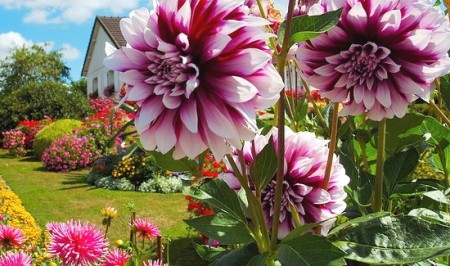
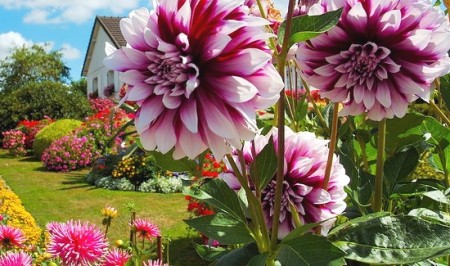

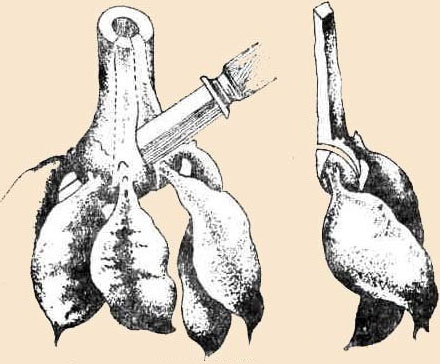
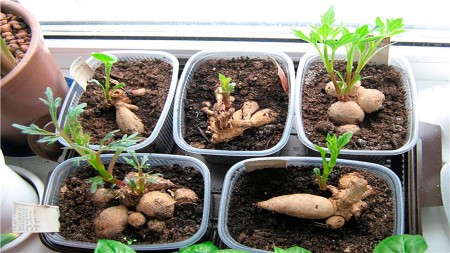
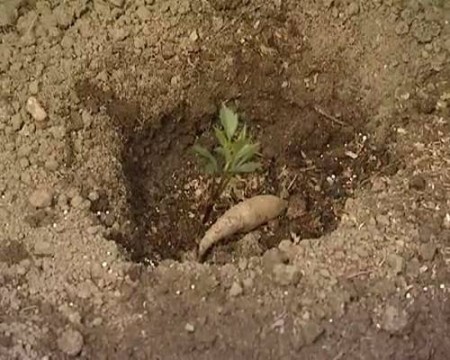
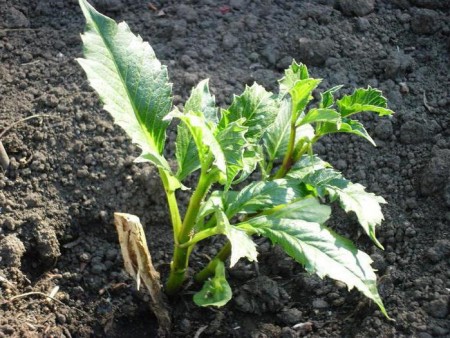
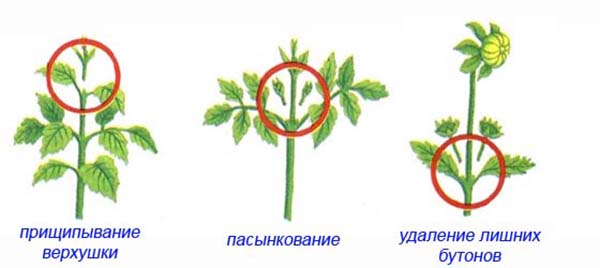
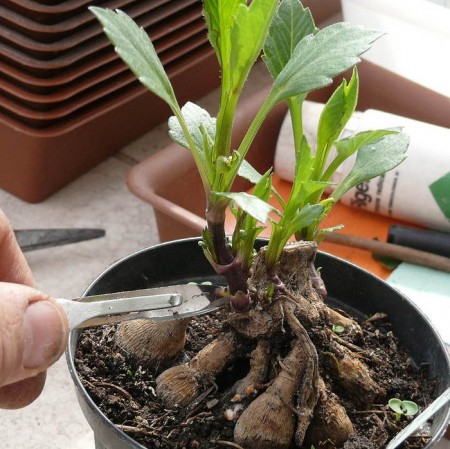

 (12 ratings, average: 4,58 out of 5)
(12 ratings, average: 4,58 out of 5) CUCUMBERS NEVER GET SICK, I'VE BEEN USING ONLY THIS FOR 40 YEARS! I SHARE A SECRET WITH YOU, CUCUMBERS ARE LIKE THE PICTURE!
CUCUMBERS NEVER GET SICK, I'VE BEEN USING ONLY THIS FOR 40 YEARS! I SHARE A SECRET WITH YOU, CUCUMBERS ARE LIKE THE PICTURE! You can dig a bucket of potatoes from each bush. Do you think these are fairy tales? Watch the video
You can dig a bucket of potatoes from each bush. Do you think these are fairy tales? Watch the video
 How our fellow gardeners work in Korea. There is a lot to learn and just fun to watch.
How our fellow gardeners work in Korea. There is a lot to learn and just fun to watch. Eye trainer. The author claims that with daily viewing, vision is restored. They don't charge money for views.
Eye trainer. The author claims that with daily viewing, vision is restored. They don't charge money for views. A 3-ingredient cake recipe in 30 minutes is better than Napoleon. Simple and very tasty.
A 3-ingredient cake recipe in 30 minutes is better than Napoleon. Simple and very tasty. Therapeutic exercises for cervical osteochondrosis. A complete set of exercises.
Therapeutic exercises for cervical osteochondrosis. A complete set of exercises. Which indoor plants match your zodiac sign?
Which indoor plants match your zodiac sign? What about them? Excursion to German dachas.
What about them? Excursion to German dachas.